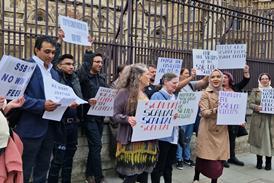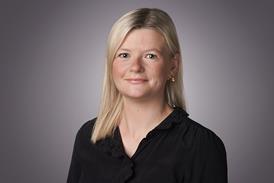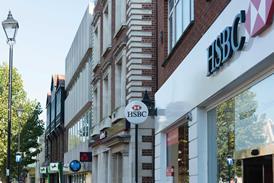It is important for defence solicitors to understand DNA evidence better and routinely to press for greater disclosure, say Mark Fenhalls and Brian Costello
On 20 December 2007 the case against Sean Hoey (R v Hoey [2007] NICC 49 – the Omagh bombing case) failed. Mr Justice Weir was critical of many aspects of the prosecution case, including the Forensic Science Service’s Low Template DNA Analysis technique (commonly known as Low Copy Number, or LCN DNA). The judgment included trenchant criticism of the principal expert from the Forensic Science Service called by the Crown.
In response to the criticism, the Crown Prosecution Service and police suspended the use of LCN evidence almost immediately. On 14 January 2008 they declared that a review of current cases was complete and the use of the technique was reinstated.
The Forensic Science Regulator (Andrew Rennison, former policeman and director of the Gambling Commission, was the first full-time appointment in February) commissioned a review chaired by Professor Caddy. The report, A Review of the Science of Low Template DNA Analysis, was delivered on 11 April. Unsurprisingly perhaps, the overall conclusion was that the LCN technique was ‘sound’, subject to a number of caveats.
Does this mean lawyers can assume that the science is now robust and take LCN results at face value? We would suggest not.
Setting the sceneLCN is designed to work with samples from the crime scene that may be significantly smaller than those used with the standard DNA profiling technique (SGM+). These extraordinarily small samples are potentially problematic.
First, there is no reliable way of determining how or when such small amounts of DNA may have become transferred. For example, a recent article in New Scientist reported that human DNA profiles can be detected in samples of household dust. Second, the potential for contamination of samples is significantly greater than with samples large enough to test with SGM+. Third, the extra cycles required by the LCN technique to amplify or ‘grow’ the samples prior to the declaration of the profile throw up anomalies at a far greater rate than when a standard SGM+ test is used. Finally, very small starting samples inevitably suffer from random stochastic or sampling effects.
To illustrate this last point, imagine a bag of 1,000 marbles – 500 red and 500 black. Trying to correctly determine the red-black ratio by drawing a sample of only four marbles would often result in error, but if a sample of 40 marbles is drawn you would expect it to reflect far more accurately the red-black ratio.
These problems are universally accepted as a feature of LCN analysis, and Professor Caddy himself made a number of specific criticisms of current practice which relate to these problems. Professor Caddy’s criticisms suggest that confidence in LCN results ought to be conditional upon significant procedural improvements.
In summary, these criticisms are as follows:
- All DNA samples should be quantified – ie a test should be conducted to determine the amount of DNA present – before further analysis;
- Training of laboratory and crime scene personnel should be standardised across the various laboratory suppliers and police force crime scene officers;
- It is essential that DNA free consumables are used, both in the scene of crime collection kits and in the laboratory analysis of samples.
There is no clear and accepted legal and scientific consensus on the scoring and mathematical analysis of LCN DNA results. Such a consensus needs to be developed.
The Police Elimination DNA database is currently incomplete, and this may be a cause of problems for LCN DNA.
All LCN scientific reports (and therefore court evidence) should include the caveat that the DNA may have been transferred by means unknown, and this includes reports concerning touch DNA. In the opinion of the report writers, it is inappropriate to comment on the source of the cellular material at all in LCN cases (for example, to say the result most likely came from saliva in the area around a postage stamp on an envelope, or from touch where it was obtained from fingerprint areas).
The increasing use of police forensic science laboratories is an area of concern. While it is to be hoped that general standards of evidence acquisition and handling are far better now than in the case that confronted Mr Justice Weir, it is a source of significant concern that so many shortcomings still exist. It remains to be seen whether such shortcomings, in a particular case, are sufficiently serious to persuade the Crown not to rely on, or the judge to exclude, such evidence. Clearly, the Crown also has responsibilities to consider the reliability of the LCN technique. Pushing the boundaries of LCN may result in the universal rejection of the technique by the courts.
The question arises: why do prosecuting authorities continue to use LCN at all? The answer is that LCN will generate DNA results where regular testing will not. However, the quality of LCN results will vary. At one end of the spectrum will be the easily interpretable and probably evidentially acceptable result; at the other end will be a scientist’s essentially subjective interpretation of a poor result. Prosecutors need to be alert to when they are approaching the lower end of this spectrum, and to ask themselves whether pressing for admission of tenuous LCN results is in the interests of justice in the particular case, and also in the wider interest of the evidential acceptance of the technique.
Questions to askRegarding the nature of the profile: is it distinct or part of a mixture? Is the profile full? If not, what statistics does the prosecution scientist ascribe to the partial profile? The weight to be attached to a full profile achieved using SGM+, which is extremely unlikely to occur twice in the UK population, is clearly far greater than that to be attached to a LCN partial profile, for example with a match probability of 1 in 60,000, which can be expected to occur in 1,000 people in the UK.
Are there any indications of multiple contributors to the crime scene sample that have been discounted or disregarded? What biological findings are there that might tend to undermine the assumptions about numbers of contributors to the crime scene stain?
What legal practitioners need to be aware of – and many are not – is that, when more than one person’s DNA is collected in a swab, it is impossible to separate the individual DNA components. Instead, the mixed DNA sample is collected, extracted and analysed as one sample. It is only when rules are applied and assumptions are made (educated guesses) that individual profiles can be inferred from a mixed sample.
Taking the sampleWas the collection of DNA adequate? Specifically, was the DNA collected with ‘DNA-free’ sample collection kits that ought to be used if LCN testing is being considered? The Caddy report notes that the decision to use kits that are not certified ‘DNA-free’ is cost-based. Establishing in front of a jury that a police force is more concerned about saving a few pounds than ensuring reliable DNA results is likely to be a valuable point for defence counsel. Such an argument will be most impressive in cases where there is an anomaly in the results that might be explained by contamination.
What was the standard of training and knowledge in relation to LCN of the crime scene officers who collected the samples? Were they properly clothed and wearing face masks throughout? Might other police officers on scene – before samples were taken – have inadvertently contaminated samples? Are they all on the Police Elimination database? Are all Scenes of Crime Officers who collected and/or handled samples on the database? Were samples first analysed by a police laboratory before submission for independent analysis? The Caddy report indicated that police labs are not ISO certified; as a result, they are unlikely to have the same safeguards as LCN labs (positive pressure environments, regular deep cleaning and so on). They may not be staffed with people trained to the necessary degree in preventing contamination during LCN analysis.
Profile techniqueLCN is a ‘technique of last resort’. Sometimes this means that SGM+ has been tried and failed. Frequently, however, it means that a scientist has reached a judgment that SGM+ is unlikely to work. The basis for such a judgment may well prove fertile ground for criticism.
If LCN has been used, was the amount of DNA quantified first?
Is the laboratory applying the technique properly accredited, and are its personnel suitably trained? Has the laboratory adjusted any of its procedures to meet the detailed recommendations of the Caddy report?
Did the DNA result meet acceptable scoring/analysis criteria? How many times was the sample analysed? Failure to undertake multiple tests may render the result less reliable. Over the number of tests, how different were the results? Are there alleles or peaks that cannot be attributed to the suspect, the victim or other identified contributor? If so, what is the expert/police/prosecution explanation for these anomalous alleles/peaks?
Final thoughtsIt has been our experience that current levels of prosecution disclosure are inadequate to answer many of the questions we suggest should be asked. If this is true at the trial stage, then it will be even more pronounced at the police interview stage. Rarely will those interviewing have a complete understanding of the potential strengths or weaknesses in the DNA result provided by the lab.
Defence solicitors need to carefully consider whether it is in their client’s interest to answer questions about DNA results until sufficient material is disclosed to properly understand the significance of the result. The bold statement of a match probability, with no reference to the method of analysing the sample (eg SGM+ v LCN) or possible problems in the interpretation (for example contamination, difficulty interpreting a mixture), in anything but the most definitive of DNA results, may be inadequate for a defendant to make a properly informed choice about answering questions. Defence solicitors need to understand DNA evidence better and, particularly in LCN cases, routinely press for greater disclosure.
At the same time, prosecutors ought to be prepared to go behind the expert statements in LCN cases, and need to ask the necessary questions to establish the reliability of LCN results before they seek to introduce them as evidence.
Mark Fenhalls is a barrister at 23 Essex Street. He appeared in a leading DNA case: R v Bates [2006] EWHC 1395 (Crim). Brian Costello worked as a research scientist in genetics for five years before qualifying as a solicitor in Australia.



























No comments yet